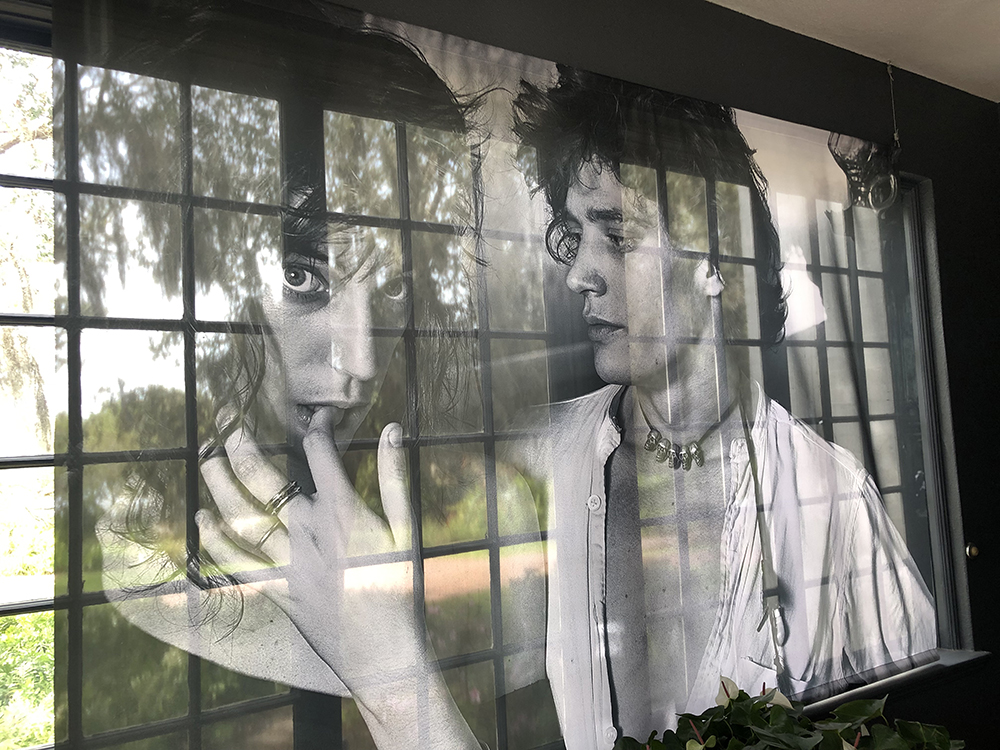
© Susan Morris.
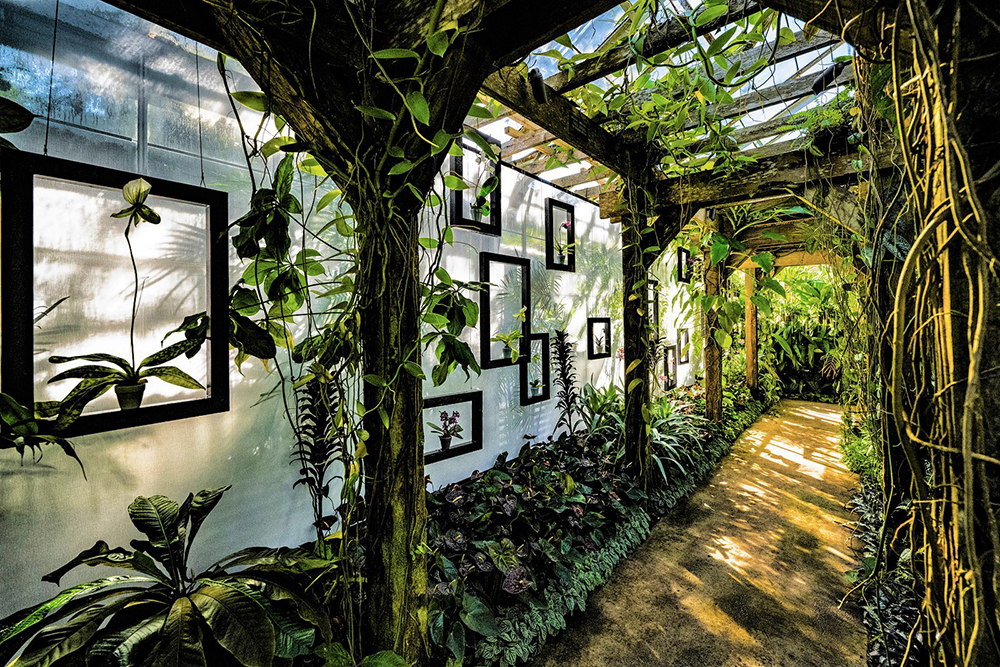
© Cliff Roles Photography
The romantic garden within him raged with wild bloom, which he plucked and carelessly tossed in every direction. For he was no naturalist - more the archer, spraying arrows in a clearing suddenly sprouting statues ... Art, not nature, moved him. Nature, he had boasted, was meant to be redesigned; opened and folded like a fan.
—Patti Smith, from “Light Play,” The Coral Sea
The Marie Selby Botanical Gardens —the living museum in Sarasota, Florida and the only botanical garden in the world dedicated to the display and study of epiphytic orchids, bromeliads, gesneriads, ferns, and other tropical plants is holding the exhibition Robert Mapplethorpe and Patti Smith: Flowers, Poetry, and Light. It is the, sixth installment of the Jean & Alfred Goldstein Exhibition series that “examines major artists and their relationships to nature, in the context of a botanical garden.” What distinguishes this series is the choice of unexpected artists, those whose art is not first associated with the natural world: Roy Lichtenstein: Monet’s Garden Goes Pop! (2021) Salvador Dali: Gardens of the Mind (2020) Marc Chagall, Flowers and the French Riviera:The Color of Dreams (2017) and Warhol: Flowers in the Factory (2018).
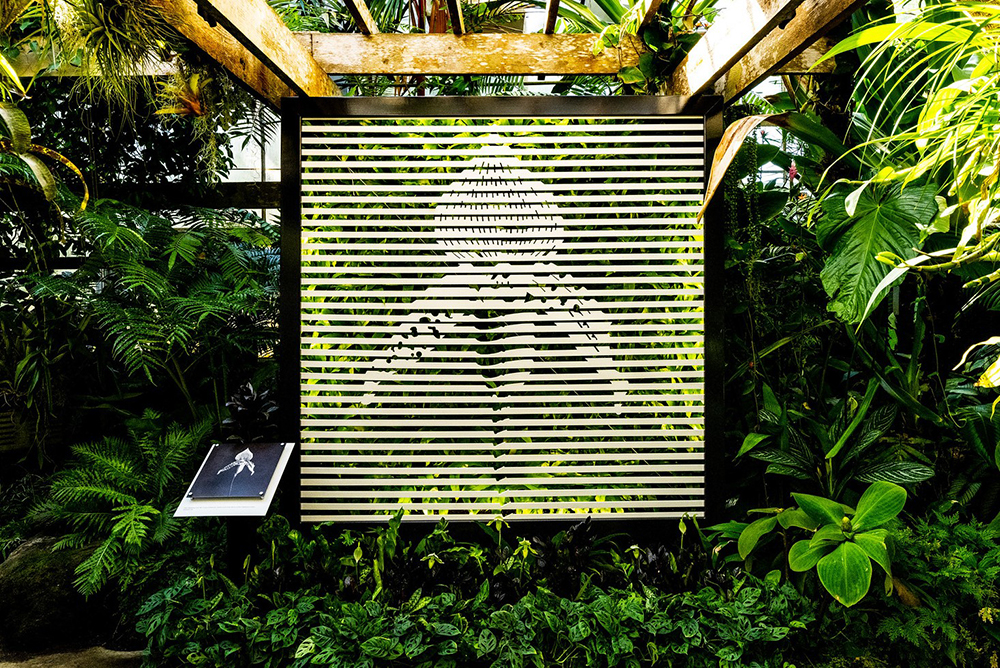
© Cliff Roles Photography
These things were on my mind: the course of the artist, the course of freedom redefined, the re-creation of space, the emergence of new voices.
—Patti Smith, from “To Find a Voice,” Collected Lyrics
Mapplethorpe is best known as the photographer of male and female nudes, some flaunting graphic sexual imagery, open homosexuality, and S&M which caused controversy; they were considered “obscene” artworks that challenged the limits of free speech. However, he· also made photographs of flowers, often in black and white, that display sensitivity, muscularity, harmony, and balance.
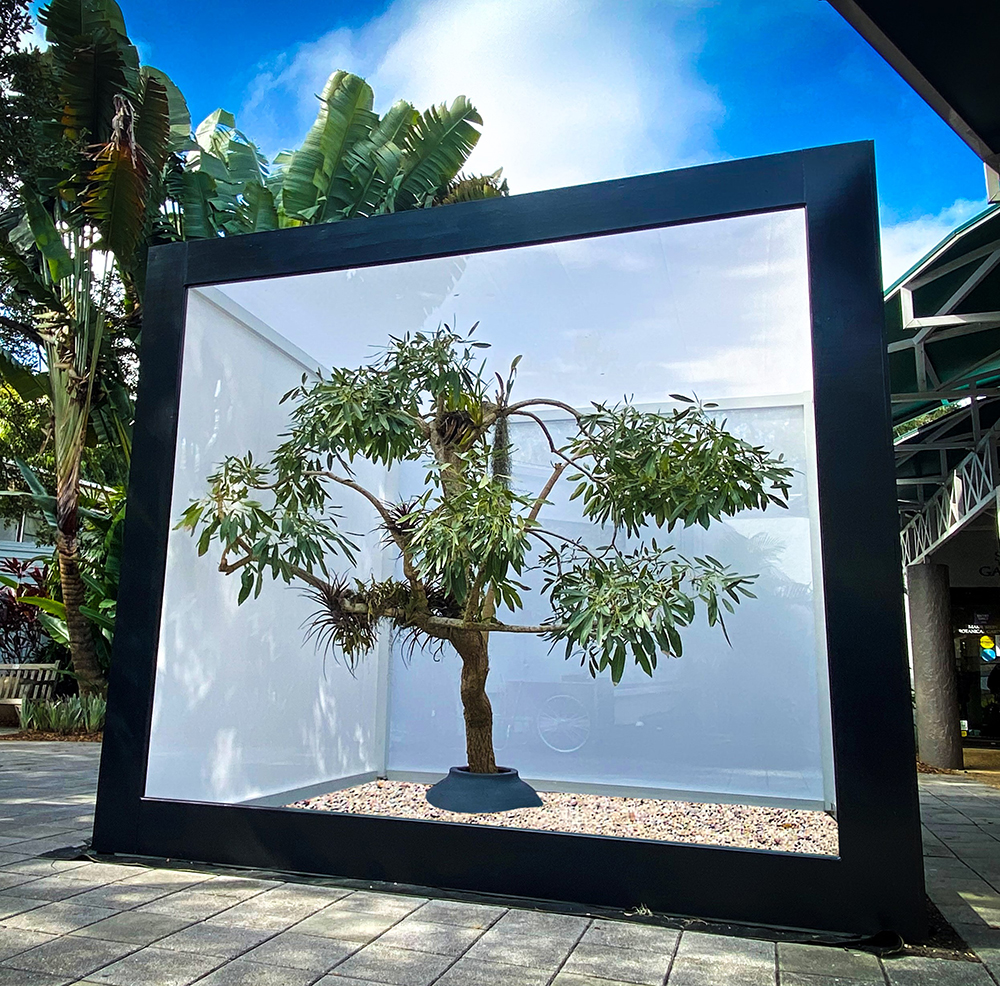
© Cliff Roles Photography
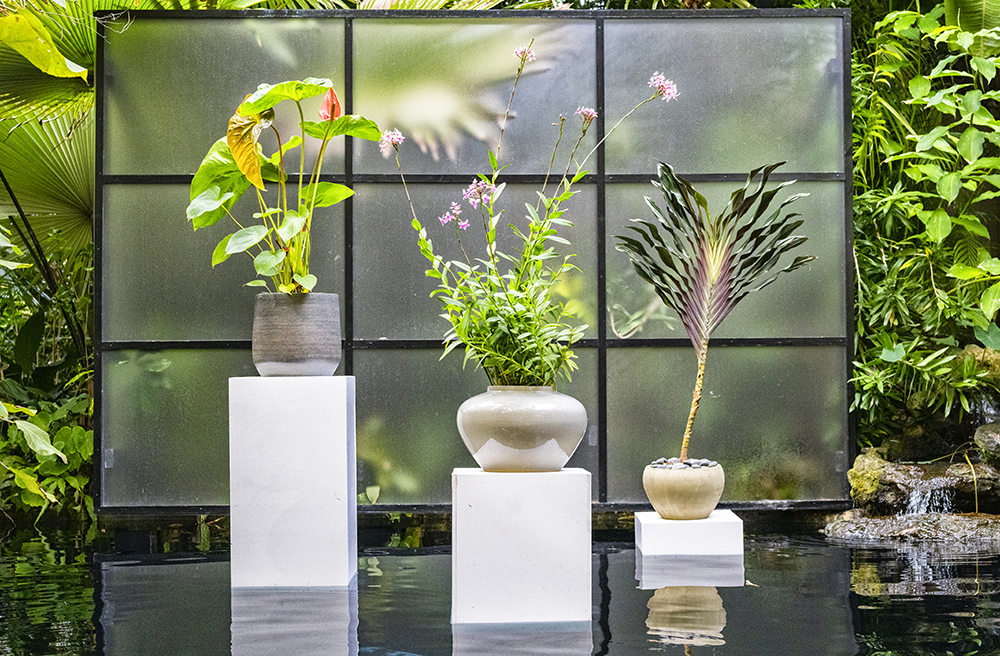
© Cliff Roles Photography
He came, in time, to embrace the flower as the embodiment of all the contradictions reveling within. Their sleekness, their fullness. Humble narcissus. Passionate zen.
—Patti Smith, in honor of Robert Mapplethorpe
At Selby Gardens Mapplethorpe’s photographs are transformed into 3D botanical designs under the direction of Curator-at-Large Carol Ockman who identified themes and content which were then interpreted and executed by staff horticulturalists, Nathan Burnaman, Christopher Elenstar, Angel Lara, and Mike McLaughlin. What also distinguishes this exhibitions series is the horticulturalist’s POV: combining science and art by translating between the two art forms. They picked up on elements in the photographs such as symmetry and asymmetry, shadow and light, grayscale (the range of tones from white to black) framing devices, and strategic splashes of color. These qualities were then rendered into the ten installations dotted throughout the gardens, greenhouses, and museum with such titles as “Aperture,” “Viewfinder,” “Wave of Gray,” and “Contrast and Balance” by using grid patterns, slatted structures, white gallery-like walls pierced with square cutouts, sequenced frames progressing from dark to light, black-dyed water pools for sharper reflections, suspended ‘floating’ plants and blossoms jutting out from he picture plane. The installations use plants from the Selby’s distinguished collection in ways evocative of Mapplethorpe’s photographs rather than directly mimicking the images.
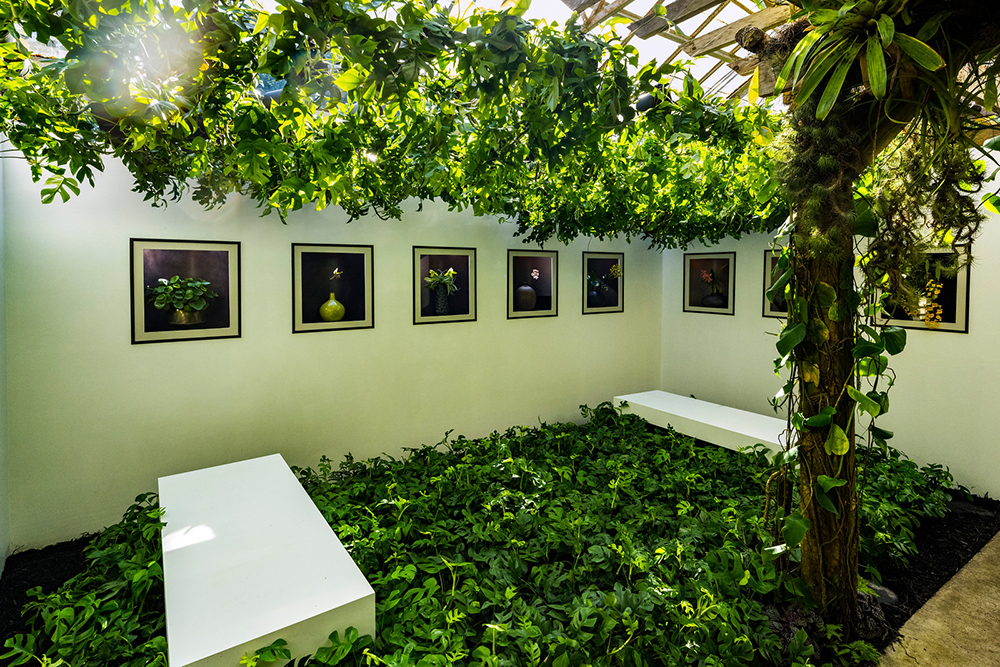
© Cliff Roles Photography
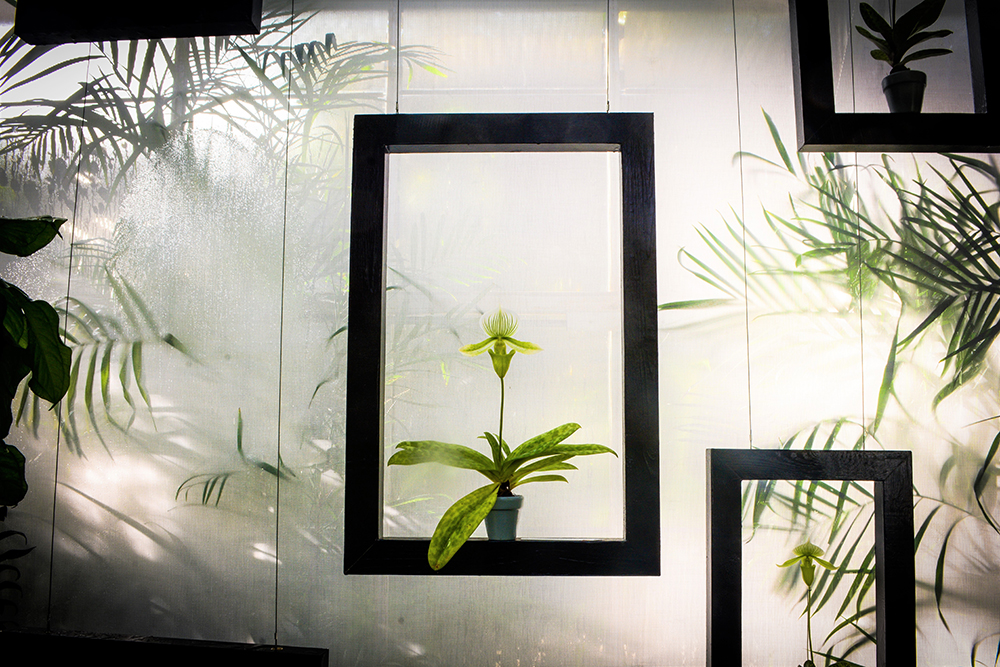
© Cliff Roles Photography
Wild leaves are falling
Falling to the ground
Every leaf a moment
A light upon the crown
That we’ll oft be wearing
In a time unbound
And wild leaves are falling
Faffing to the ground
—Patti Smith, from Wild Leaves
Mapplethorpe’s visual art is complemented by the words and voice of his close friend and fellow artist Patti Smith. Musician (cover photo for her first album, Horses, was her portrait by Mapplethorpe), poet, author (she won he 20110 National Book Award for Just Kids her memoir of their time together), as well as visual artist, she is here represented by her prose in exhibition labels and audio recordings of readings from her work on the natural world and their relationship. We also see photographs of Smith taken by Mapplethorpe and of the pair shot by other artists and friends. With her slender frame dressed in stark black and white, and her distinctive large eyes and fringed dark hair, she is another sturdy yet vulnerable flower captured by Mapplethorpe.

© Susan Morris.
He found them to be worthy conspirators in the courting and development of conflicting emotions ... Often they were symbolic of him; his processes. Modeled in geometric shade. Modified in a famous vase and inevitably turned in the realm of their own simplicity - the blossoming of the mystifying aspects of the pure.
—Patti Smith, in honor of Robert Mapplethorpe
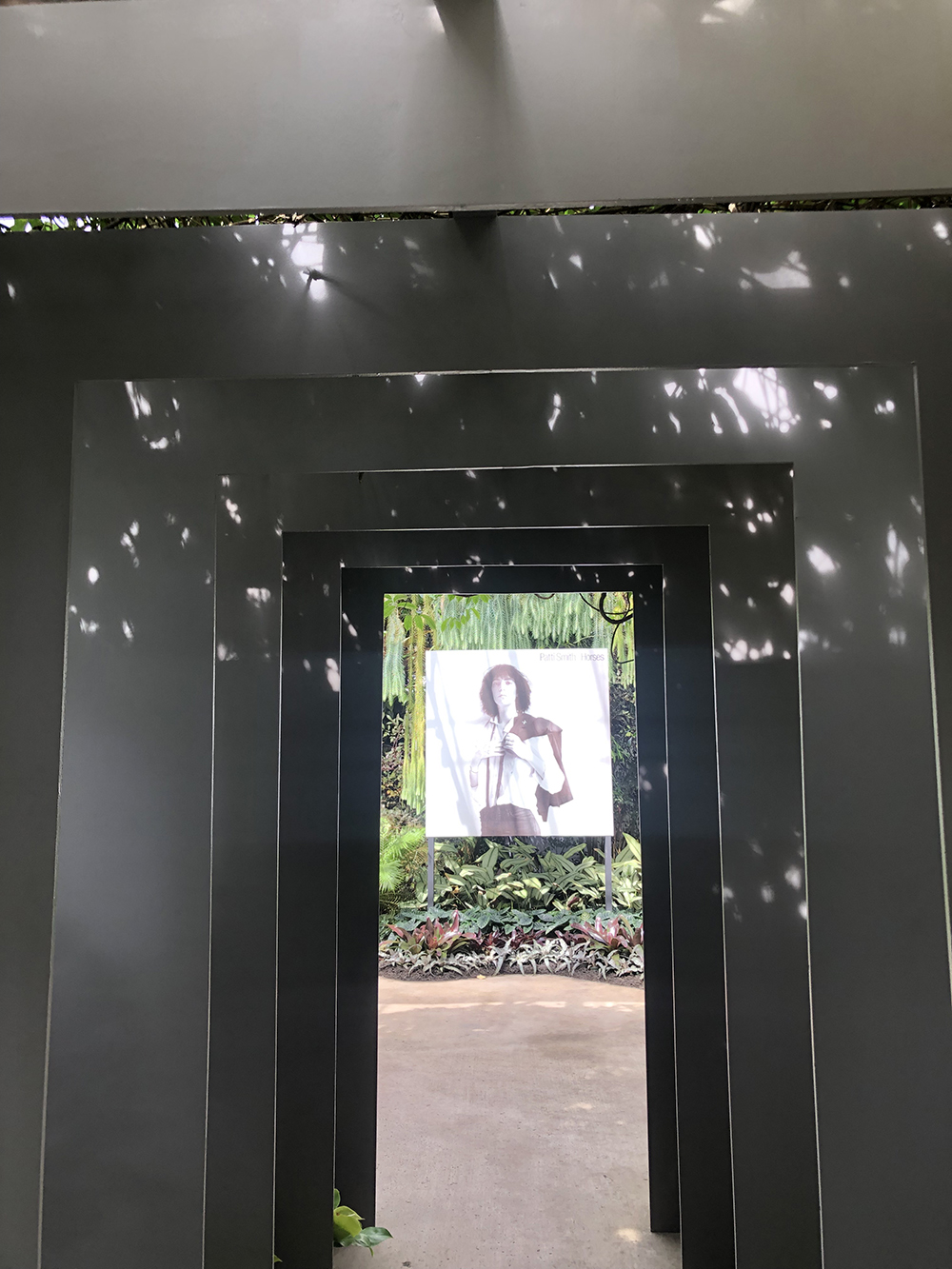
© Susan Morris.
Also of design note is the Selby Garden’s new Master Plan by OLIN Studio (landscape architecture), Overland Partners (architecture), with local architects Sweet Sparkman Architecture & Interiors, Kimley Horn (civil engineer), Arup (engineering) and One80Solar (solar energy). The plan, scheduled for completion in August 2023, almost doubles the size of the gardened open space, and envisions the city street location as a grand pedestrian promenade. In addition to adding more open space and a destination for plant research, conservation, and environmental education, it will create a new stormwater purification and solar energy plant on site, making the campus the first ever net-positive botanical garden complex in the world. The Selby intends it as an international model for the latest green building technology.

Courtesy of the John & Mable Ringling Museum of Art.
The other major cultural institution in Sarasota is the Ringling, a campus consisting of the Museum of Art (its first director was Chick Austin, the innovative director of the Hartford Atheneum), Circus Museum, the historic Asolo Theater (an 18th-century Italian theater that was dissembled in 1930 and shipped from the Veneto to Florida, and the 1926 36,000 square foot Ca’ d’Zan (“House of John”), the Venetian-style mansion based on the Doge’s palace designed by architect Dwigiht James Baum (1886-1939) sited on 20 acres of waterfront. It boasts broad patios, a waterfront dock, Venetian glass windows, terra cotta ‘T’ blocks, ceiling murals by Willy Pogany, Ziegfeld Follies set decorator, original Waldorf Astoria chandelier, and a 82’ tall six-story tower. (The house was in such disrepair it was used for Miss Havisham’s decrepit manse in he 1996 film Great Expectations starring Gwyneth Paltrow.) The 21-gallery Museum of Art was modeled on the Florentine Uffizi Gallery, and houses Ringling’s collection of Velazquez, Poussin, van Dyke, and Rubens, and replicas of Greek and Roman statues in the courtyard. Incorporated into the museum structure are portions from two New York City palatial homes destroyed in 1926: the Huntington Mansion a 2 E. 5 Street by George B. Post (currently the site of Tiffany and Co.), including marble friezes, door surrounds, and fireplaces in the Italian Renaissance style, and the Astor Mansion at 840 Fifth Avenue at 61st street by Richard Morris Hunt.
